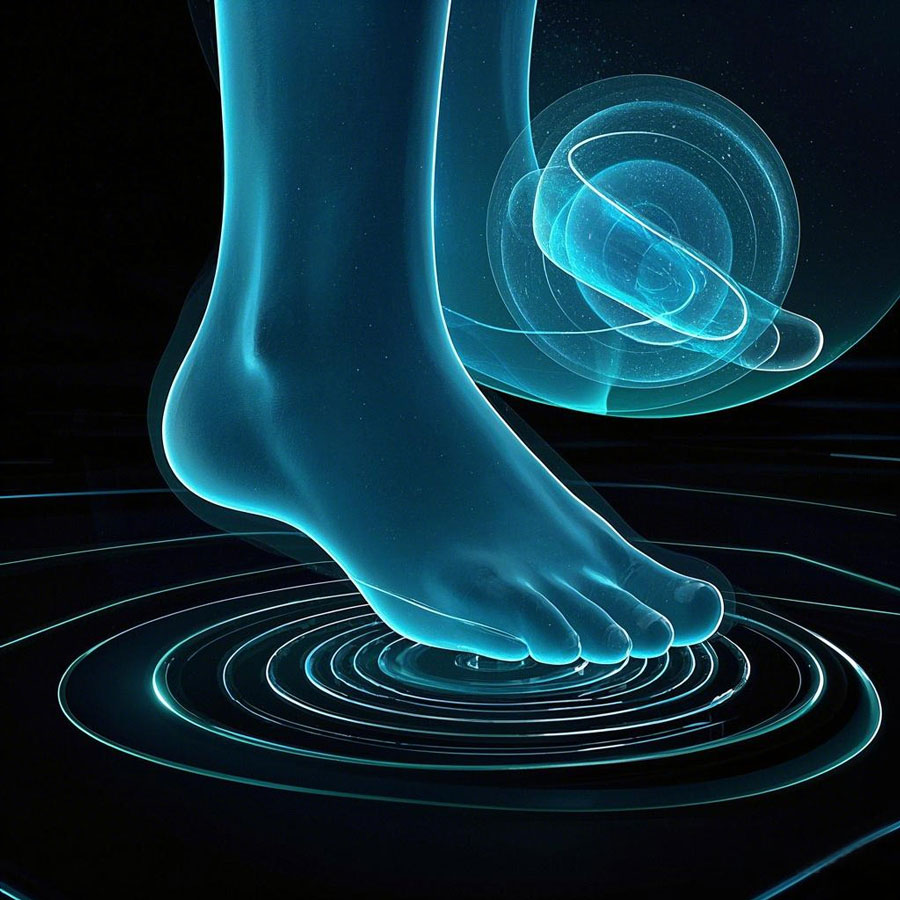The Science Behind Grounding

Scientific Basis
Research suggests that grounding may have several health benefits, including:
- Reducing Inflammation: Free electrons from the Earth may neutralize free radicals, reducing inflammation.
- Improving Sleep: Grounding has been linked to improved sleep patterns, possibly due to its effect on cortisol levels and circadian rhythms.
- Enhancing Circulation: Some studies suggest that grounding can improve blood flow and reduce blood viscosity.
- Reducing Stress and Anxiety: By stabilizing the body's electrical activity, grounding may help reduce stress and promote relaxation.
1. The Electrical Connection to the Earth
Earth's Electrical Charge
The Earth has a natural negative electrical charge due to its abundance of free electrons.
When humans make direct contact with the ground, these electrons can transfer into the body, potentially neutralizing free radicals and reducing inflammation.
Modern lifestyles, with insulated shoes and synthetic flooring, have largely disconnected humans from this natural electrical exchange.
2. Anti-Inflammatory Effects
Inflammation and Chronic Disease
One of the most studied benefits of grounding is its potential to reduce inflammation. Inflammation is linked to many chronic diseases, including heart disease, diabetes, and autoimmune disorders.
Research suggests that grounding can reduce markers of inflammation, such as C-reactive protein (CRP), and improve immune response by neutralizing free radicals.
A 2015 study published in the Journal of Inflammation Research found that grounding reduced inflammation and improved wound healing in rats.
3. Improved Sleep and Stress Reduction
Cortisol Regulation
Grounding has been shown to regulate cortisol levels, the hormone associated with stress. Lower cortisol levels can improve sleep quality and reduce stress.
A 2004 study in the Journal of Alternative and Complementary Medicine found that grounding during sleep normalized cortisol rhythms and improved sleep patterns.
Grounding may also increase parasympathetic (rest-and-digest) activity and decrease sympathetic (fight-or-flight) activity, promoting relaxation.
4. Cardiovascular Benefits
Grounding may improve blood flow and reduce blood viscosity, which can lower the risk of cardiovascular disease.
A 2013 study in the Journal of Environmental and Public Health found that grounding improved heart rate variability (HRV), a marker of cardiovascular health and stress resilience.
5. Pain Reduction
Some studies suggest that grounding can reduce chronic pain, including muscle soreness and joint pain.
This effect may be due to the reduction of inflammation and the normalization of electrical activity in the body.
6. Potential Mechanisms
- Electron Transfer: Free electrons from the Earth may neutralize positively charged free radicals, reducing oxidative stress.
- Nervous System Regulation: Grounding may influence the autonomic nervous system, promoting balance between the sympathetic and parasympathetic systems.
- Bioelectrical Effects: The body operates on electrical signals (e.g., nerve impulses, heart rhythms), and grounding may help stabilize these signals.
7. Criticisms and Limitations
While some studies show promising results, the body of research on grounding is still relatively small, and many studies have small sample sizes or lack rigorous controls.
Critics argue that more large-scale, double-blind studies are needed to confirm the health benefits of grounding.
Some benefits attributed to grounding may also result from other factors, such as spending time outdoors or engaging in relaxation practices.
8. Practical Applications
- To practice grounding, spend time walking barefoot on natural surfaces like grass, soil, or sand.
- Use grounding mats or sheets, which are designed to mimic the Earth's electrical charge, especially for indoor use.
- Aim for at least 20-30 minutes of grounding daily to potentially experience benefits.
Conclusion
Grounding is a simple, natural practice with growing scientific interest. While preliminary research suggests it may offer benefits such as reduced inflammation, improved sleep, and stress relief, more rigorous studies are needed to fully understand its mechanisms and effects. For those interested, grounding is a low-risk practice that can easily be incorporated into daily life.
References
- Chevalier, G., Sinatra, S. T., Oschman, J. L., Sokal, K., & Sokal, P. (2012). Earthing: Health Implications of Reconnecting the Human Body to the Earth's Surface Electrons. Journal of Environmental and Public Health, 2012.
- Oschman, J. L. (2009). Charge transfer in the living matrix. Journal of Bodywork and Movement Therapies, 13(3), 215-228.
- Chevalier, G., & Sinatra, S. T. (2011). Emotional stress, heart rate variability, grounding, and improved autonomic tone: Clinical applications. Integrative Medicine: A Clinician's Journal, 10(3), 16-21.
- Brown, R. (2010). The effects of grounding (earthing) on inflammation, the immune response, wound healing, and prevention and treatment of chronic inflammatory and autoimmune diseases. Journal of Inflammation Research, 3, 35-40.
